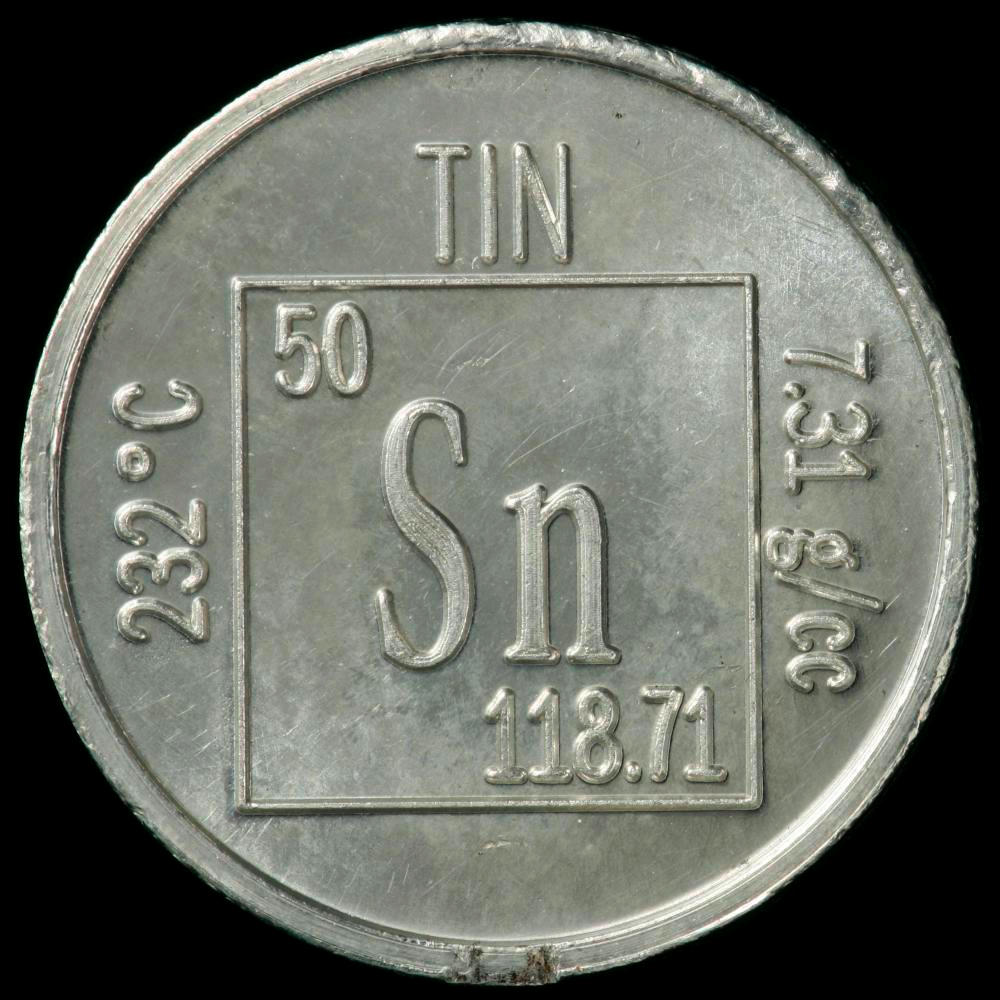Identity.
Tin, with the chemical symbol Sn (from Latin: stannum), is a
silvery-white, malleable, ductile metal in Group 14 of the periodic
table. It is the 49th most abundant element in the Earth's crust. Tin
is a relatively soft metal, with a Mohs hardness of 1.5–2. It is also
quite malleable and ductile, making it easy to work with. Tin has a
melting point of 231.93 °C (449.47 °F) and a boiling point of 2,270 °C
(4,118 °F).
History.
Tin is a metal that typically occurs in nature in the form of the
mineral cassiterite. It is believed that tin was discovered about
6-6.5 thousand years ago, around the same time as copper1. Tin was
widely known in the Mediterranean countries, Persia, and India.
Egyptians imported tin from Persia for the production of bronze1. Tin
is primarily obtained from the mineral cassiterite and is chiefly
mined in Malaysia2.
Sources.
Tin is relatively rare in the Earth’s crust, with only about two parts
per million. Therefore, it had to be traded over long distances to
meet the demand of bronze-making cultures. The main sources of tin in
ancient times were China, Britain, France, Germany, Spain, Portugal,
Italy, and Africa Today, the largest producers of tin are China,
Indonesia, Peru, Bolivia, and Brazil.
